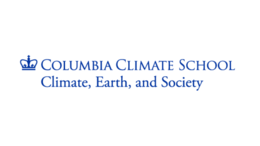The climate crisis is one of the greatest threats facing humanity. To meet this challenge, Columbia University has created the nation’s first climate school. Marshaling the university’s longtime strengths in transdisciplinary research and innovation, the Climate School will advance groundbreaking science, develop essential solutions, reach key policymakers, and ensure that students are equipped with the knowledge and tools to become the climate leaders of the 21st century.
The Climate School builds on the unique history of climate research at Columbia, dating to the founding of the Lamont Geological Observatory (now Lamont-Doherty Earth Observatory) in 1949. Scientists there subsequently provided the keys to understanding the physics of the planet’s climate system, including the role of the oceans in regulating climate, the causes of natural climate swings and, later, how they interact with human influences. It was a Columbia scientist who introduced the phrase “global warming” into the scientific lexicon in the early 1970s. Among other things, Columbia researchers explained the workings of the powerful global El Niño weather system, and early on predicted the current U.S. West megadrought.
Columbia Climate School's mission is to develop and inspire knowledge-based solutions and educate future leaders for just and prosperous societies on a healthy planet.
